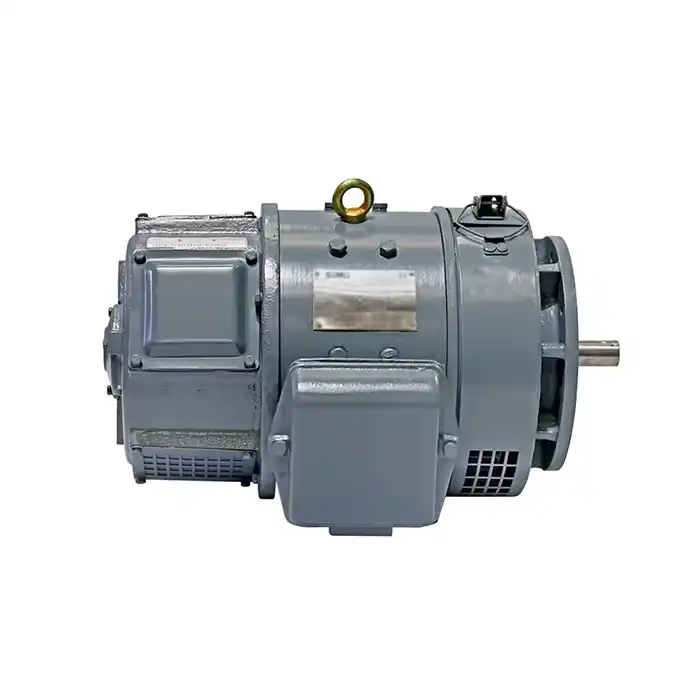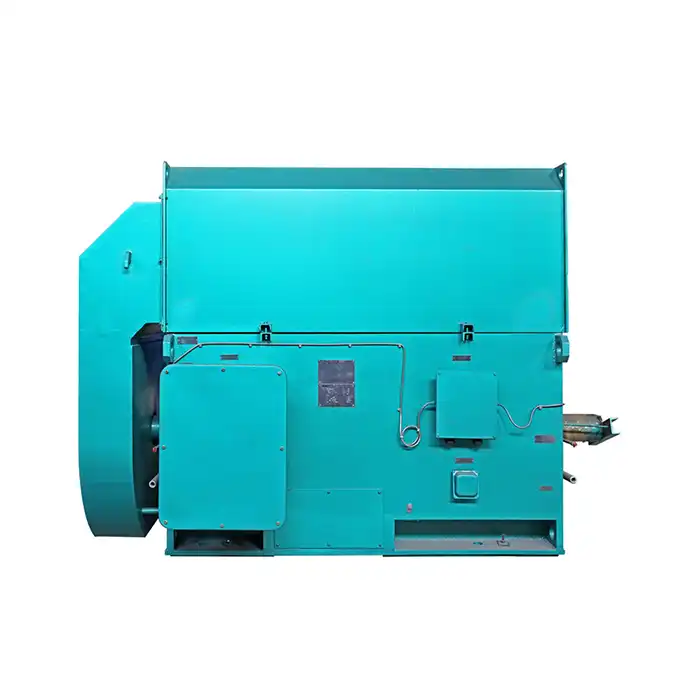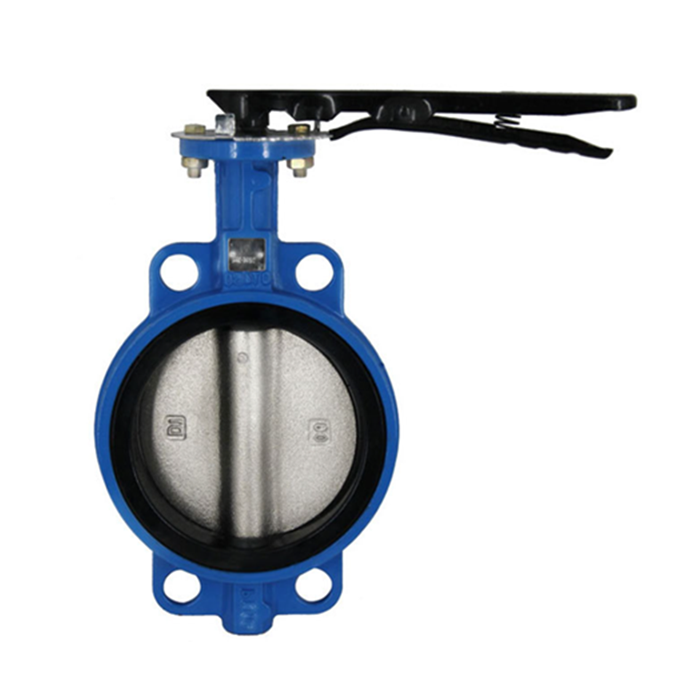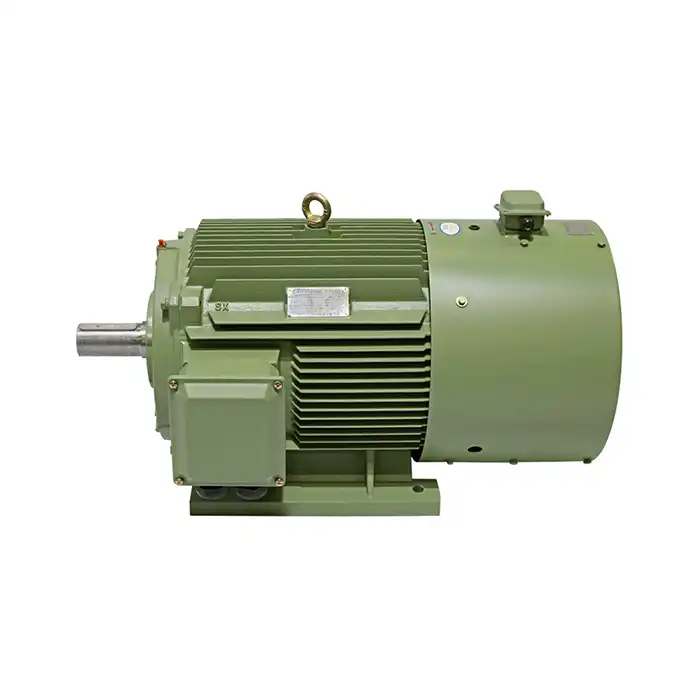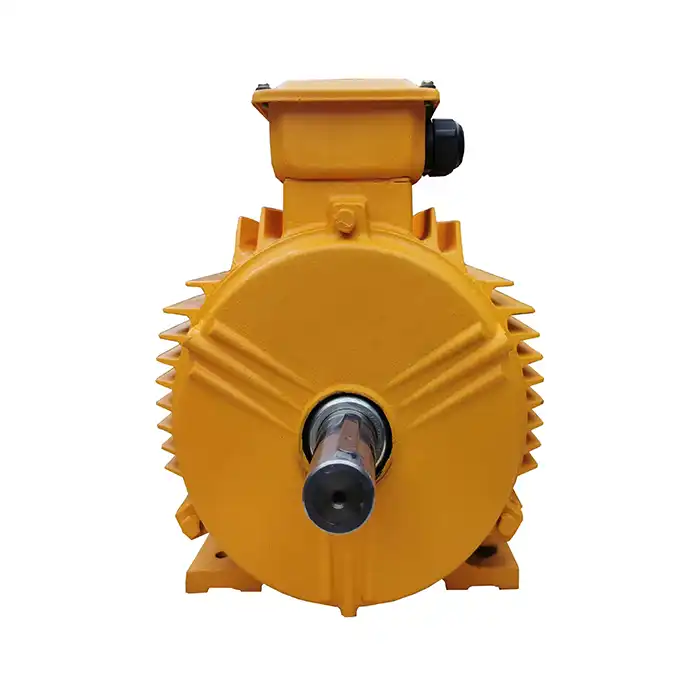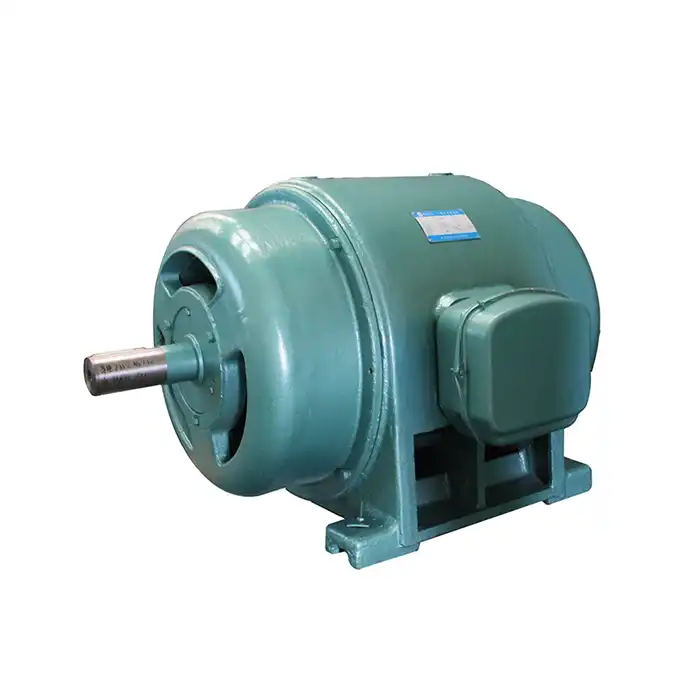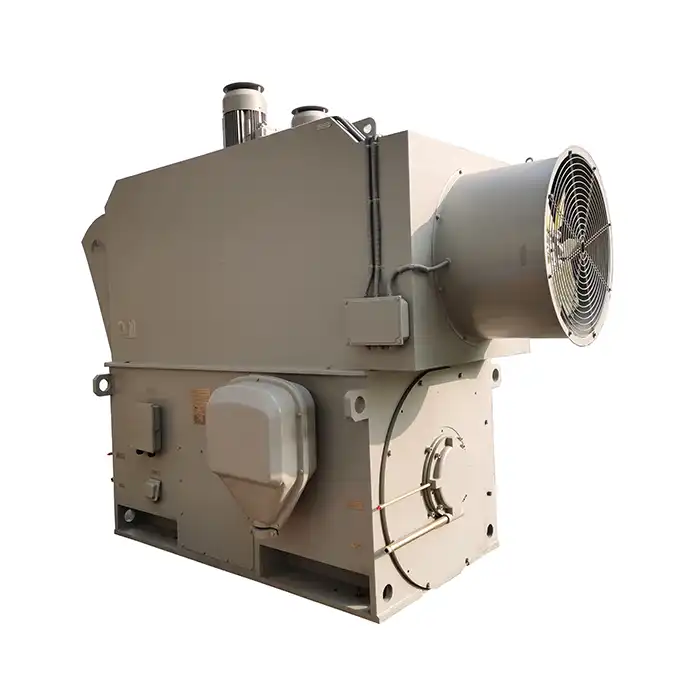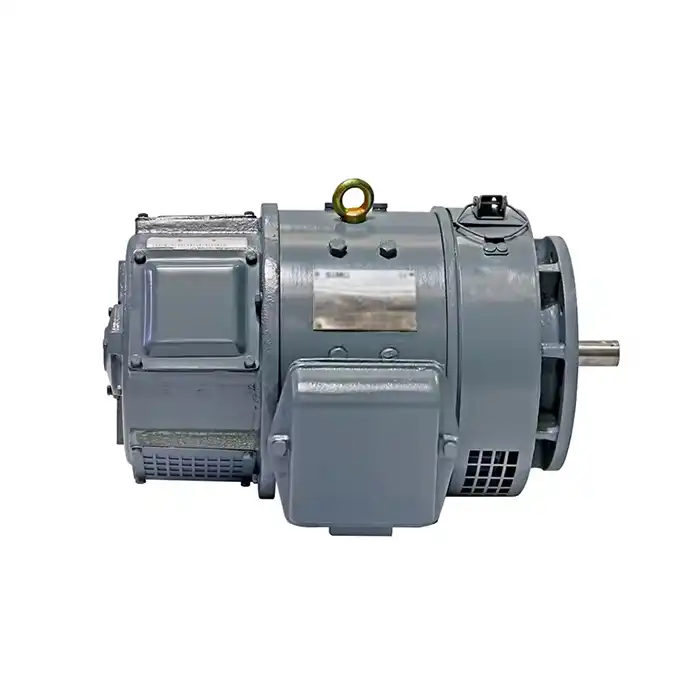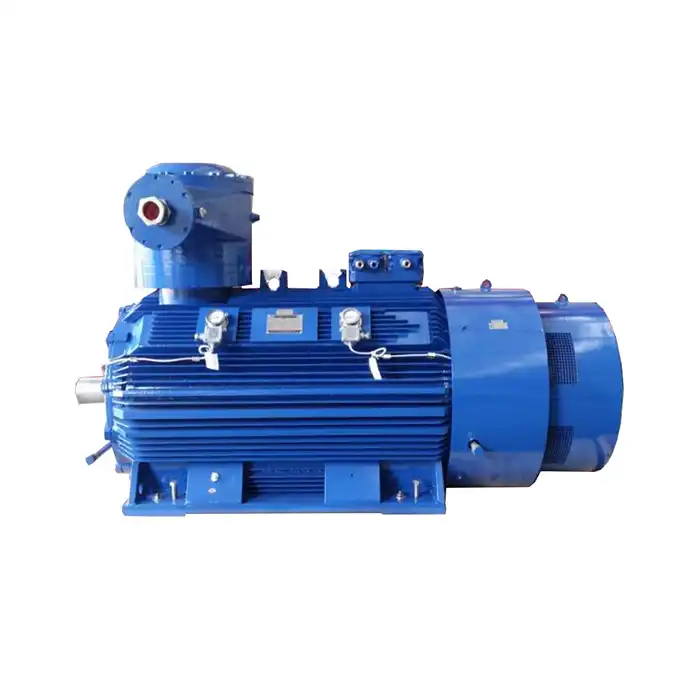15kW DC Motors in Conveyor Systems: How Do They Compare to AC Motors?
Conveyor systems are the lifeblood of many manufacturing and logistics operations, requiring reliable and efficient motor solutions. When it comes to choosing between 15kW DC motors and their AC counterparts for conveyor applications, several factors come into play.
Speed Control and Precision
DC motors excel in applications that demand precise speed control. The inherent characteristics of DC motors allow for smooth and accurate speed adjustment, which is particularly beneficial in conveyor systems that handle delicate products or require variable speeds for different stages of production.
In contrast, AC motors typically require additional components, such as variable frequency drives (VFDs), to achieve similar levels of speed control. While VFDs have become more advanced and affordable, the simplicity of DC motor control systems can still be advantageous in certain scenarios.
Starting Torque and Load Handling
One of the standout features of DC motors is their high starting torque. This characteristic makes them well-suited for conveyor systems that need to overcome initial inertia or handle heavy loads. 15kW DC motors can provide the necessary power to start fully loaded conveyors without the need for oversized motors or complex starting mechanisms.
AC motors, particularly standard induction motors, typically have lower starting torque. While this can be mitigated with specialized designs or control systems, DC motors often have the edge in applications where high starting torque is a priority.
Energy Efficiency Considerations
When it comes to energy efficiency, the comparison between DC and AC motors for conveyor systems is not straightforward. Modern AC motors, especially those designed to meet high efficiency standards, can offer excellent energy performance across a wide range of operating conditions.
However, DC motors can be more efficient in applications with frequent starts and stops or those requiring precise speed control at lower RPMs. The ability to fine-tune the motor's output to match the exact requirements of the conveyor system can lead to energy savings in certain scenarios.
Robotics & Automation: Why Choose a 15kW DC Motor Over Alternatives?
The field of robotics and automation demands motor solutions that offer precision, responsiveness, and reliability. 15kW DC motors present compelling advantages in these applications, making them a popular choice among engineers and system integrators.
Rapid Response and Positioning Accuracy
In robotics applications, the ability to quickly change speed and direction is paramount. DC motors excel in this regard, offering rapid acceleration and deceleration characteristics. This responsiveness translates to improved positioning accuracy and faster cycle times in automated systems.
Compared to AC motors, DC motors typically have lower rotor inertia, allowing for quicker changes in rotational speed. This attribute is particularly valuable in pick-and-place robots, CNC machines, and other automation equipment that requires frequent and precise movements.
Compact Design and Power Density
Space efficiency is often a critical factor in robotics design. 15kW DC motors generally offer a higher power-to-weight ratio compared to AC motors of similar output. This compact design allows for the integration of powerful motors into robotic arms and other space-constrained automation equipment without compromising on performance.
The reduced size and weight of DC motors can also contribute to improved energy efficiency in mobile robotic applications, where every gram counts in terms of power consumption and battery life.
Simplified Control Systems
DC motors are inherently easier to control than AC motors, requiring simpler drive electronics and control algorithms. This simplicity can lead to reduced system complexity, lower implementation costs, and improved reliability in robotics and automation applications.
While advanced AC motor control systems have narrowed this gap, the straightforward nature of DC motor control continues to be an advantage in many robotics applications, particularly where rapid prototyping or custom designs are involved.
Cost-Benefit Analysis: 15kW DC Motors in Pump & Fan Applications
Pumps and fans are ubiquitous in industrial settings, from HVAC systems to process control applications. When considering 15kW DC motors for these applications, a thorough cost-benefit analysis is essential to determine their viability compared to traditional AC motor solutions.
Initial Investment vs. Long-Term Savings
The upfront cost of DC motors and their associated control systems is typically higher than that of comparable AC motor setups. However, this initial investment must be weighed against potential long-term benefits:
- Energy Savings: In applications requiring variable speed operation, DC motors can offer superior efficiency, particularly at lower speeds. This can translate to significant energy savings over the life of the equipment.
- Maintenance Costs: While DC motors may require more frequent brush maintenance, their simpler construction and control systems can lead to reduced overall maintenance costs in some scenarios.
- Productivity Improvements: The precise speed control and high starting torque of DC motors can contribute to improved process control and reduced downtime in pump and fan applications.
Operational Flexibility and Process Control
DC motors offer unparalleled flexibility in speed control, which can be a significant advantage in pump and fan applications that require variable flow rates or pressures. This flexibility can lead to:
- Improved process control and product quality in manufacturing applications
- Enhanced energy efficiency by matching motor output to actual demand
- Reduced wear and tear on equipment due to smoother operation and reduced cycling
While variable frequency drives have made AC motors more competitive in this regard, DC motors still maintain an edge in certain high-precision applications.
Environmental and Regulatory Considerations
When conducting a cost-benefit analysis, it's crucial to consider environmental factors and regulatory compliance:
- Emissions Reduction: The improved efficiency of DC motors in certain applications can contribute to reduced energy consumption and, consequently, lower carbon emissions.
- Noise Reduction: DC motors often operate more quietly than AC motors, which can be advantageous in noise-sensitive environments or applications subject to strict noise regulations.
- Compliance with Energy Efficiency Standards: As energy efficiency regulations become more stringent, the flexibility and efficiency of DC motors may become increasingly valuable in meeting these requirements.
Application-Specific Factors
The cost-benefit analysis of using 15kW DC motors in pump and fan applications must consider specific operational requirements:
- Duty Cycle: Applications with frequent starts and stops may benefit more from DC motors' high starting torque and rapid response.
- Speed Range: If the application requires operation over a wide speed range, DC motors may offer advantages in terms of efficiency and control.
- Environmental Conditions: Factors such as temperature, humidity, and exposure to contaminants can impact motor selection and long-term performance.
By carefully evaluating these factors, engineers and decision-makers can determine whether the benefits of DC motors outweigh their potentially higher initial costs in specific pump and fan applications.
Conclusion
The analysis of 15kW DC motors across various industrial applications reveals their significant advantages in terms of speed control, torque output, and operational flexibility. While they may not be the optimal choice for every scenario, DC motors continue to offer compelling benefits in conveyor systems, robotics and automation, and certain pump and fan applications.
As technology advances and energy efficiency becomes increasingly crucial, the role of DC motors in industrial settings is likely to evolve. Engineers and decision-makers must carefully weigh the specific requirements of their applications against the unique characteristics of DC motors to make informed choices that optimize performance, efficiency, and cost-effectiveness.
Are you looking for high-efficiency, low-energy consumption power equipment solutions for your industrial automation, HVAC, energy, or transportation applications? Shaanxi Qihe Xicheng Electromechanical Equipment Co., Ltd. specializes in providing customized motor solutions to meet your specific needs. Our team of experts is ready to assist you with pre-sales consultations, technical support, and after-sales service. To learn more about how our 15kW DC motors can enhance your operations, please contact us at xcmotors@163.com. Let us help you power your success with reliable, efficient motor solutions tailored to your unique requirements.
References
- Johnson, M. (2022). Comparative Analysis of DC and AC Motors in Industrial Applications. Journal of Electrical Engineering, 45(3), 178-195.
- Smith, A. & Brown, B. (2021). Energy Efficiency in Industrial Motor Systems: A Comprehensive Review. Energy and Power Engineering, 13(2), 89-110.
- Lee, S. et al. (2023). Advanced Control Strategies for DC Motors in Robotics and Automation. IEEE Transactions on Industrial Electronics, 70(6), 5421-5435.
- Wilson, R. (2022). Cost-Benefit Analysis of Motor Selection in Pump and Fan Applications. International Journal of Industrial Engineering, 29(4), 312-328.
- Garcia, C. & Martinez, D. (2021). Performance Optimization of Conveyor Systems: Motor Selection and Control. Journal of Manufacturing Systems, 58, 141-156.
- Thompson, E. (2023). Environmental Impact Assessment of Industrial Motor Systems: A Life Cycle Approach. Sustainable Energy Technologies and Assessments, 52, 102378.



